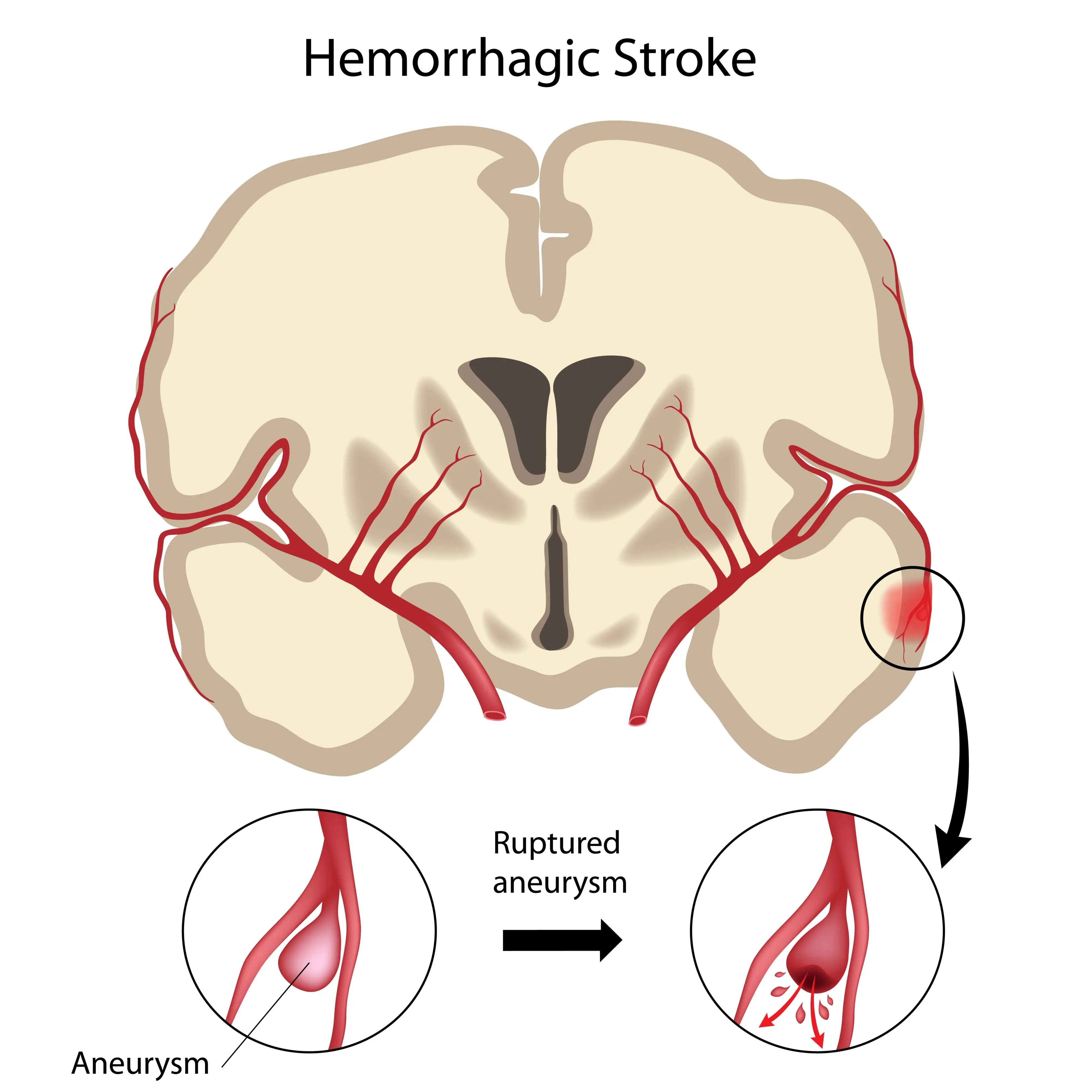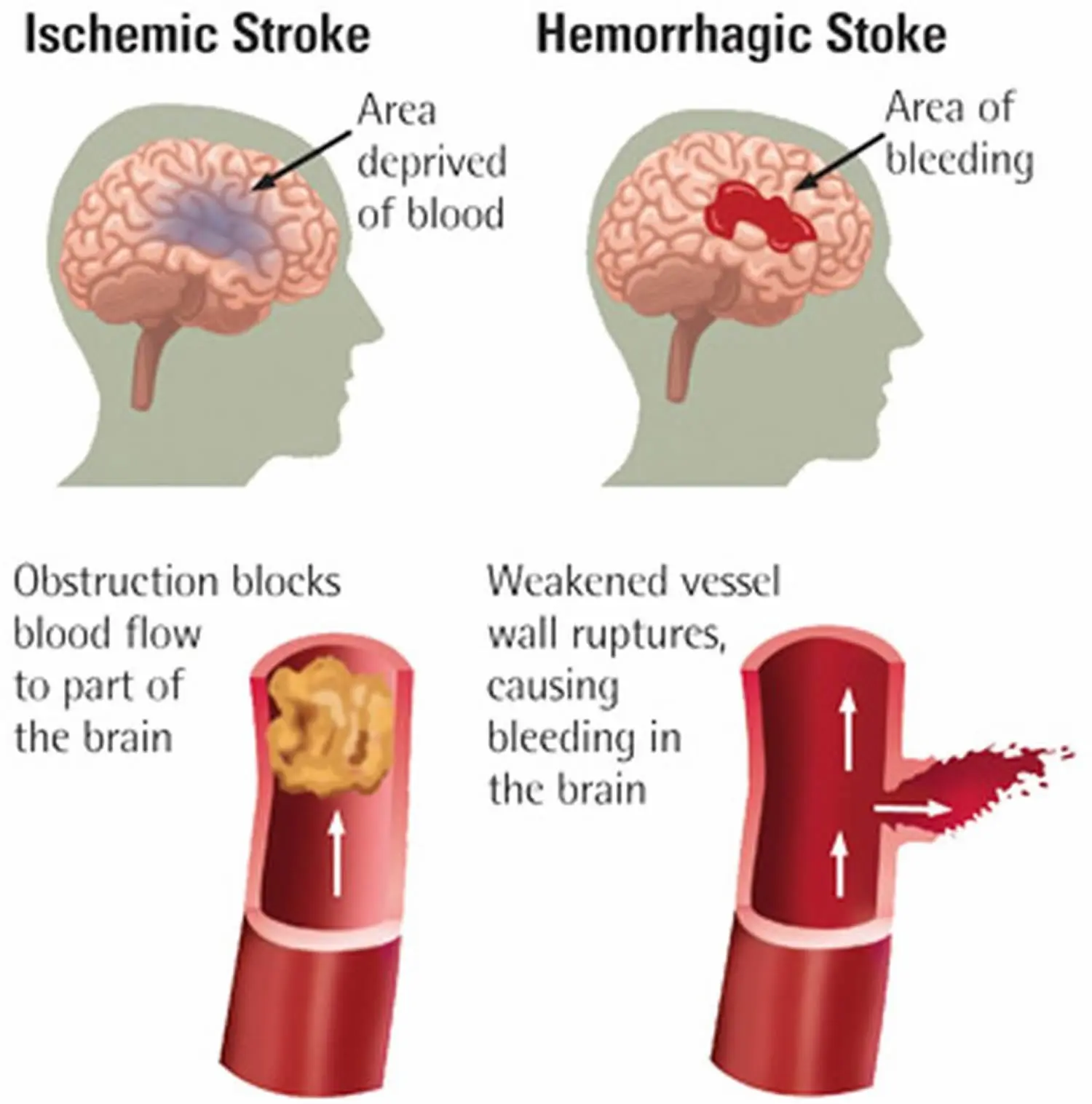Can Hemorrhagic Stroke be Cured?
Sometimes
Requires immediate medical intervention; outcomes depend on the location and extent of bleeding, as well as the promptness of treatment; recovery and rehabilitation may vary, and some individuals may experience lasting effects

What is Hemorrhagic Stroke?
A hemorrhagic stroke occurs when a blood vessel in the brain ruptures, leading to bleeding and damage to brain tissue. This can result from conditions such as uncontrolled hypertension or aneurysms. Symptoms include severe headache, weakness, and difficulty speaking. Treatment may involve surgery and rehabilitation.

Clinical Aspects

Characteristics
Type of stroke caused by bleeding in the brain, often due to a ruptured blood vessel

Symptoms
Sudden severe headache, loss of consciousness, weakness on one side of the body

Diagnosis
Imaging studies, clinical evaluation

Prognosis
Variable, depends on the extent and location of bleeding

Complications
Neurological deficits, complications affecting daily life
Etiology and Treatment

Causes
Rupture of a blood vessel in the brain, often associated with high blood pressure, aneurysms, or arteriovenous malformations

Treatments
Emergency medical attention, surgery to repair the bleeding vessel, medications to control blood pressure

Prevention
Emergency medical attention, surgery to repair the bleeding vessel, medications to control blood pressure
Public Health and Patient Perspectives

Epidemiology
Stroke caused by bleeding in the brain

Patient Perspectives
Emergency medical attention, supportive care, rehabilitation
This information is for general understanding and is not a substitute for professional medical advice. Always consult with healthcare providers for accurate and personalized information related to your health.
Share: